Mariani's Virtual Gourmet Newsletter
May 15, 2011
Click Here to return to
John Mariani's Homepage

"After Eve Ate Apples" by
Galina
Stepanoff-Dargery (2010)
This
Week
Iceland: Brave New World, Part One
by John Mariani
New
York Corner: Pier 9
by John Mariani
Man
About
Town:
5 and Diamond
by Christopher Mariani
Notes From the Wine Cellar: Making a
Case for Big Bottles
by John Mariani
Quick Bytes
Announcement: This Friday, May
20, John
Mariani will appear at Atlanta
Food
&
Wine
Festival, for
an
"Italian
Dinner
at
Pricci
– How Italian Food Influenced Southern Fare." with Chefs
Jamie Adams and Piero Premoli. Guests will dine on rustic dishes
and enjoy
a lively discussion with Mariani about Italian influences on Southern
fare. John will
sign copies of his new book How
Italian Food Conquered the World. For tickets, click here.
❖❖❖
Brave New World
Part One
by John Mariani
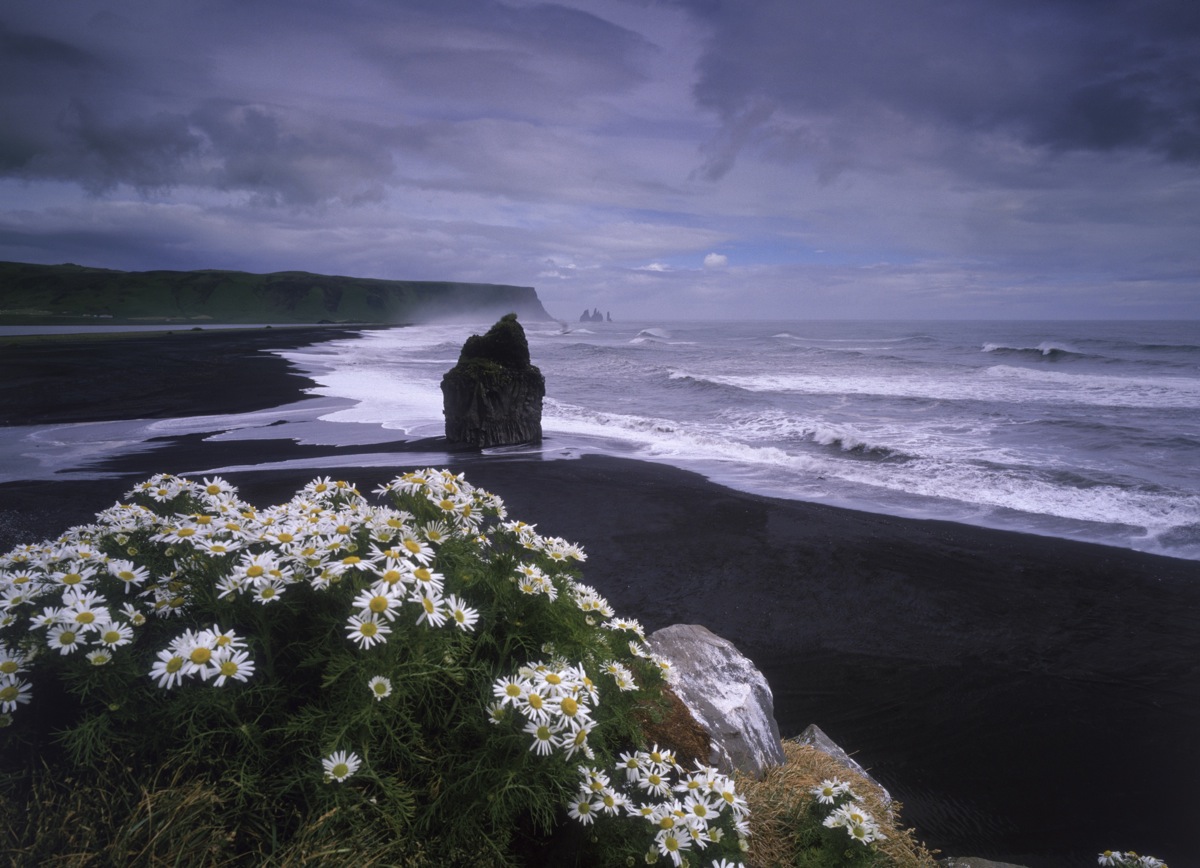
I
have
often
wondered
what
my
last words on earth would be, and now I know: “Oh,
shit!
That’s
what I screamed as my SUV started sinking into a torrential river on
the far
side of the volcano Eyjafjallajökull (below) that carved Iceland several
new ones when
it blew last April in Iceland.
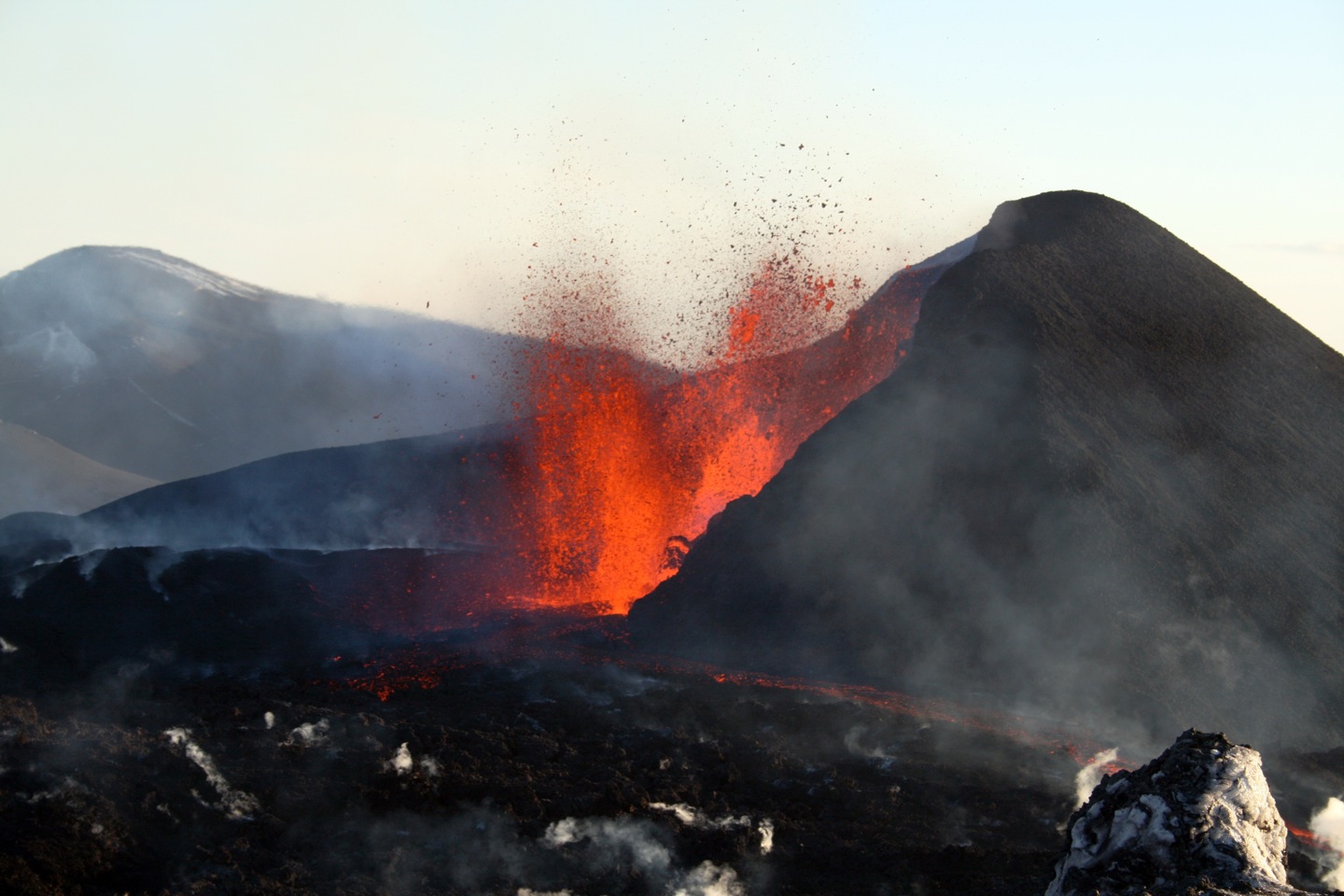 My
guide, whose name was Ingi Thor, had crisscrossed this territory a
thousand times,
but this was a new river, flanked by thousands of acres of muddy tundra
onto
which the great god Eyjafjallajökull had tossed rocks that ranged
from the size
of basketballs to haystacks. Ingi
rolled over them all, then decided to ford this new river, telling me
not to
worry because the truck had 46-inch wheels.
My
guide, whose name was Ingi Thor, had crisscrossed this territory a
thousand times,
but this was a new river, flanked by thousands of acres of muddy tundra
onto
which the great god Eyjafjallajökull had tossed rocks that ranged
from the size
of basketballs to haystacks. Ingi
rolled over them all, then decided to ford this new river, telling me
not to
worry because the truck had 46-inch wheels.
Down
the
edge
of
the
river
we went, into the icy water, only to find ourselves
carried along, sinking fast, in the fast flow. Then,
a
few
long
seconds
after I shouted my last words, the
tires caught hold of the river bottom and dragged us to safety. Ingi shook his head and said, “Vell,
I’ve been through vorse.”
“Oh
yeah,
when?”
“Oh,
maybe
fifteen
years
ago.”
I
screamed
at
him,
“You
mean
this is the second worst
river
crossing
you’ve ever
been through?”
“Vell,
maybe
dis
vas
just
as
bad. You just never can tell vit dese new cracks in
the earth.”
Ingi
then
set
about
testing
the
depth of the water at different points by
throwing
big rocks in the center. “If dey make a big splash or if you can count
to
three before hearing dem hit bottom, it’s too deep to cross. If black
sand
comes up, it could be quicksand.” After
tossing about ten rocks into the river, he gave up.
”I think ve
take anudder route.”
Back
in
Reykjavik,
steadying
my
nerves
with a drink of the local cumin-flavored
liquor called Brenbin (which means “black death”), I had time to think
about my
near demise, but it was nudged out of my mind by the memories that day
of seeing
the eerie beauty that Eyjafjallajökull had wrought after blowing a
new crater in its side, gushing down blue-green glacial ice (left), causing floods known as jökulhlaups to create new
rivers, causing electrical storms, and spewing so much ash into the
sky that
air travel was disrupted in Europe for a week. Later
on
that
fall,
farmers in and around the volcano had
their best crops ever, owing to the rich mineral ash that covered their
land.
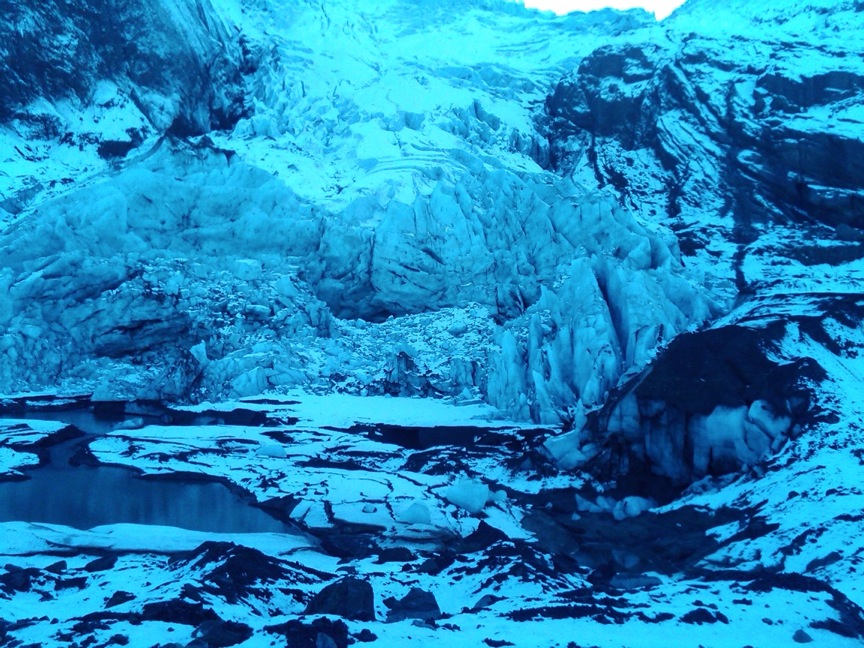 I
had
climbed
one
of
the
older glaciers
earlier in the day, with cleats on my feet
and a spiked walking pole in my hand, with a harness tied around me so
that, as
Ingi said, “If you fall in a crater, we can pull you out.”
After an hour, I’d had it with
crunching my feet into the sheer ice and we headed back—over that dark,
raging
river I almost drowned in.
I
had
climbed
one
of
the
older glaciers
earlier in the day, with cleats on my feet
and a spiked walking pole in my hand, with a harness tied around me so
that, as
Ingi said, “If you fall in a crater, we can pull you out.”
After an hour, I’d had it with
crunching my feet into the sheer ice and we headed back—over that dark,
raging
river I almost drowned in.
While
those
may
be
my
most
vivid memory of Iceland, all others were of astounding
beauty amidst endless desolation, which included 250 miles of black
sand beach (below),
which was like stepping into cold poured asphalt. The
cloud
patterns
seem
ferocious
and in autumn shadows move
furiously over the hilly land over which run woolly wild horses. Then come the sunsets, whose own
beauty is but a prelude to the mystical Northern Lights that sometimes
play
across a jet
black sky.
Geologically and geographically, Iceland is
listed as the world's eighth largest island, with 3,100 miles of
rippling, ragged coastline and fjords. Settlements date back to the
ninth century AD when Norwegian chieftain Ingólfur Arnarson
arrived, though others had visited but not stayed on. Denmark and
Norway (its closest European neighbor, 178 miles away) battled over the
country--and 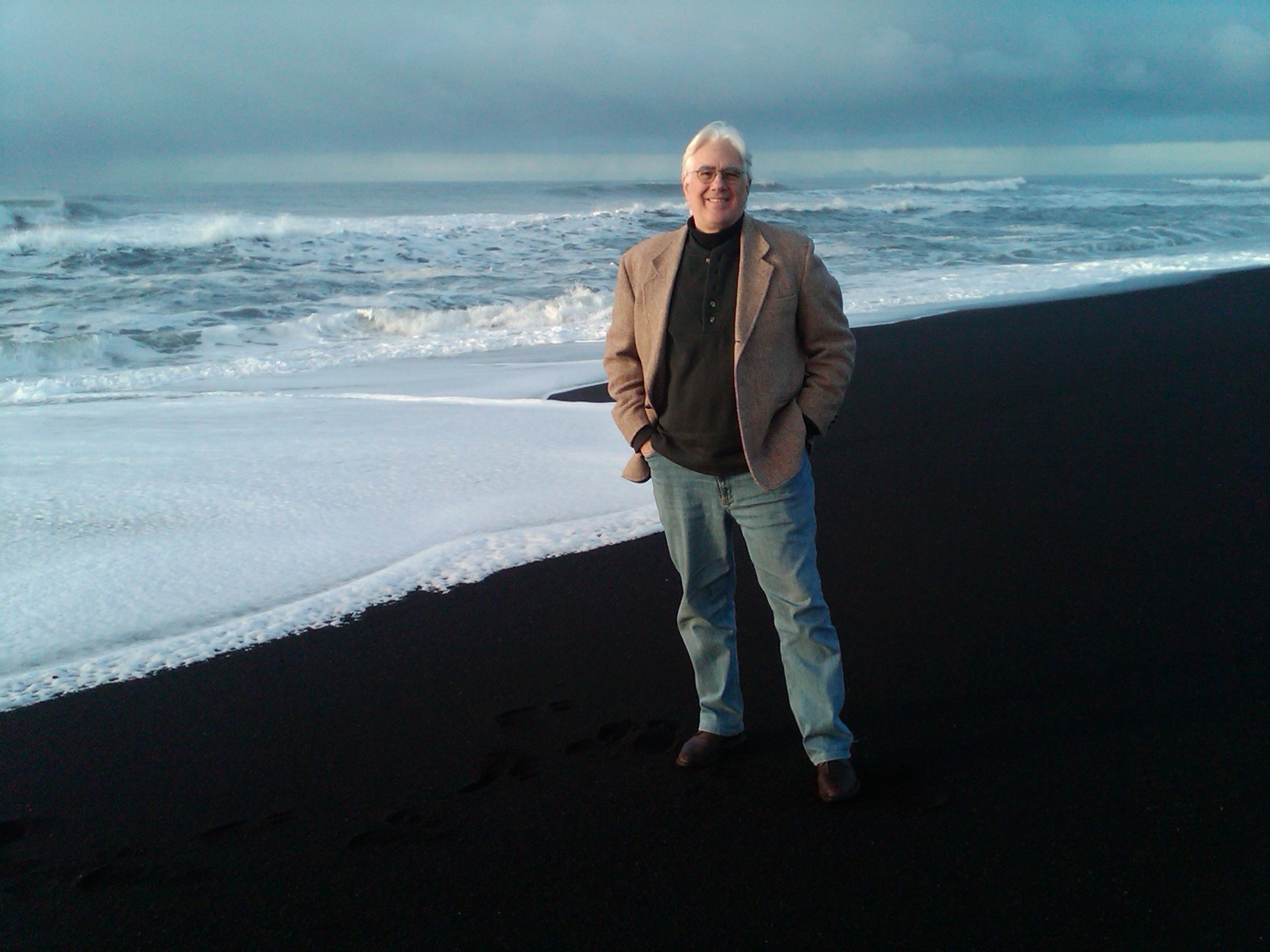 which religion should be imposed--from the 13th
century till the 20th. There was considerable emigration to Canada in
the 19th century, owing to a worsening climate, with only about 15,000
staying behind, but by mid-century an Icelandic independence movement
took hold, and in 1874 Denmark gave the people its own constitution and
some home rule, with full independence as of 1918. Although
declaring its neutrality on World War II, the country was occupied by
British, then American troops. As of 1944 the linkage to Denmark
was finally voted void and Iceland became a republic. And even though
it has no standing army, Iceland later became a member of NATO.
which religion should be imposed--from the 13th
century till the 20th. There was considerable emigration to Canada in
the 19th century, owing to a worsening climate, with only about 15,000
staying behind, but by mid-century an Icelandic independence movement
took hold, and in 1874 Denmark gave the people its own constitution and
some home rule, with full independence as of 1918. Although
declaring its neutrality on World War II, the country was occupied by
British, then American troops. As of 1944 the linkage to Denmark
was finally voted void and Iceland became a republic. And even though
it has no standing army, Iceland later became a member of NATO.
Industry, once driven solely by fishing, increased
in many diverse areas, with a good deal of Hi-Tech. I had a
chance to visit the Icelandic
Glacial
Water
Company,
which claims now
to produce the purest water on earth, drawn from the Hlíðarendi
Spring,
formed
during
a
massive volcanic eruption more than 4,500
years ago.
Everything about Iceland—which had so
little snow recently that the ski resort
was closed—draws you outside the towns, for what looks virginal and
primordial
is also brand new, a brave new world of hillsides and mountains,
glaciers and seashore
continually being molded by Nature, sometimes softly, sometimes by
violent volcanic
eruption, so that any drive or any trek from one year to another can
reveal new astonishments that remind you how transient even the oldest
things on
earth can be, like clouds moving over the yawning hills and quiet
little
seaside towns
NEXT WEEK: IF
YOU GO TO ICELAND, WHERE TO STAY AND EAT
Photos by Vanessa Tierney
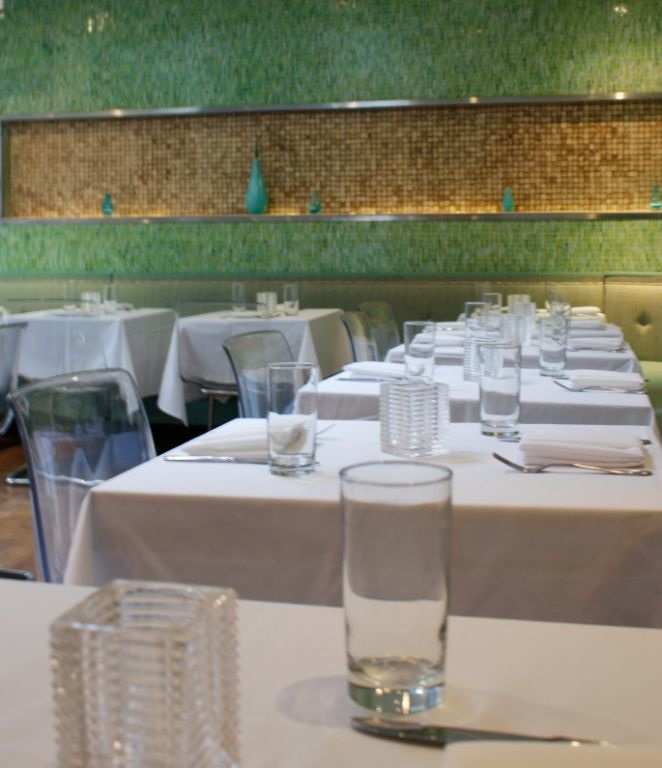 PIER 9
PIER 9
802 Ninth
Avenue
212-262-1299
www.pier9nyc.com
Good
seafood
restaurants tend to have a fairly long life, whether
it's the grand Le Bernardin or a fried shrimp place like Johnny's Reef
on City Island. Pier 9, set where Agua Dulce used to be on Ninth
Avenue, is just what this Hell's Kitchen neighborhood needed--a
handsome, casual, full-service seafood house that fits impeccably into
the second decade of this century. Unlike the new John
Dory
Oyster Bar, which is a dark, drop-in, no-rez eatery, Pier 9 has is
a
spacious restaurant with plenty of natural lighting and colors of the
sea. Plastic chairs glisten and the white tablecloths reflect
light and warmth. There's a very popular bar up front, and the service
staff is as cheery as the atmosphere. Outdoor seating right now
is much sought out.
Chef-partner Eric Hara (below) is well known in NYC dining
circles, 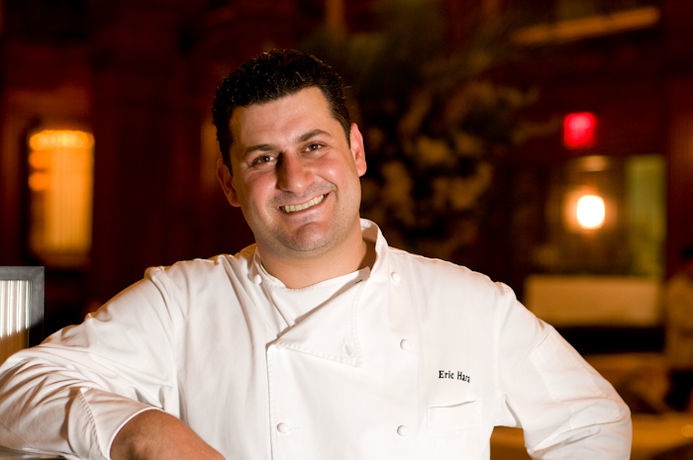 having most recently been at the Oak Room at The Plaza
hotel, and before that with David Burke's restaurants. He first opened
9 next door, then Pier 9 last month, and business has been predictably
good at both places. He has put together both a solid menu and
staff , including Chef de Cuisine David Valencia, formerly at The
Modern and Adour, so there's something for everyone here (even the
requisite New York strip steak) among all the piscine species.
having most recently been at the Oak Room at The Plaza
hotel, and before that with David Burke's restaurants. He first opened
9 next door, then Pier 9 last month, and business has been predictably
good at both places. He has put together both a solid menu and
staff , including Chef de Cuisine David Valencia, formerly at The
Modern and Adour, so there's something for everyone here (even the
requisite New York strip steak) among all the piscine species.
Start off with an exquisite razor clam ceviche
dressed with olive oil, cilantro, mint, and olives. Ceviches need that
extra spark that sushi rarely provides, and Pier 9's are
stellar.
So, too, I find it impossible to believe anyone could not love his mini
"laughing bird" shrimp tacos: with tomatillo and cucumbers. There
is, of course, a raw bar with the season's best oysters, clams and
mussels, and hot appetizers include a wonderfully creamy and happily
rich sweet corn and lobster bisque. Lobster "Mac n Cheese" (below) is not what you might
expect, actually a tad frou-frou, as cheese-filled pasta cylinders with
big chunks of lobster, but it is absolutely delicious. There are also
several mussel items; we enjoyed the green curry version with shiitake
mushrooms.
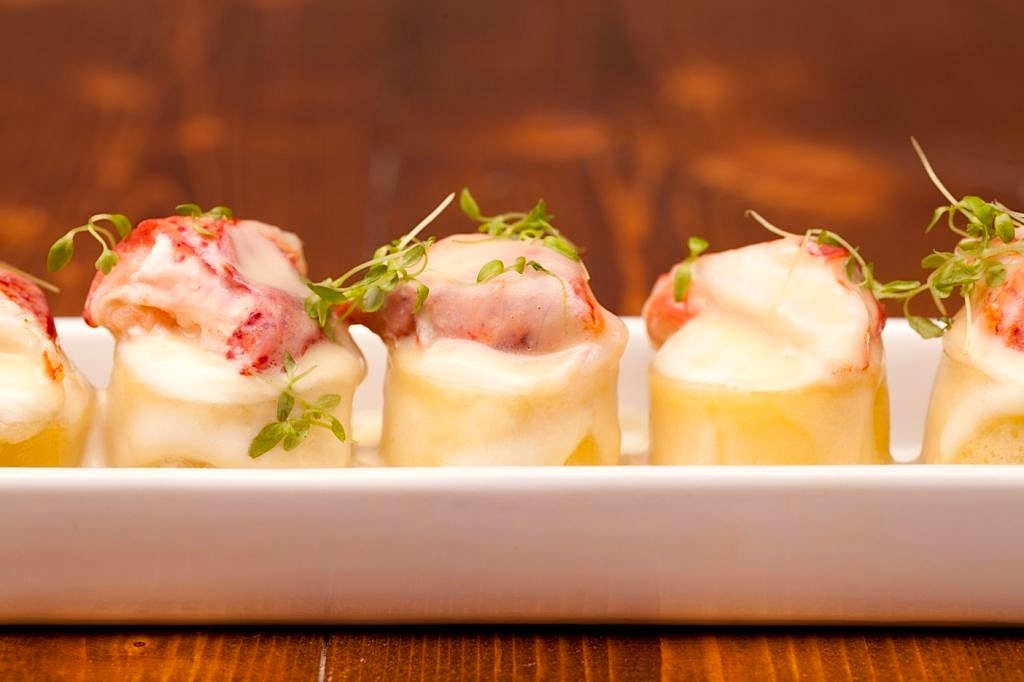 "Simply Prepared" describes the
excellent choice of grilled whole dorade, grilled Spanish octopus, and
scallops cooked on the griddle, and then there are the American seafood
"Classics," which includes a "Chicago-style [?] lobster hot dog" as
well as a traditional east coast lobster roll, and Southern fried
Chatham cod, which was all right, if not singular. And if you still
can't decide, there are nightly entrees like big-eye tuna au poivre with onion puree and
spinach, and horseradish-crusted
Scottish salmon
with melted leeks and eggplant caponata.
Don't miss the scrumptious,
crispy French fries or the roasted corn with asiago cheese. You can get
three sides for $15.
"Simply Prepared" describes the
excellent choice of grilled whole dorade, grilled Spanish octopus, and
scallops cooked on the griddle, and then there are the American seafood
"Classics," which includes a "Chicago-style [?] lobster hot dog" as
well as a traditional east coast lobster roll, and Southern fried
Chatham cod, which was all right, if not singular. And if you still
can't decide, there are nightly entrees like big-eye tuna au poivre with onion puree and
spinach, and horseradish-crusted
Scottish salmon
with melted leeks and eggplant caponata.
Don't miss the scrumptious,
crispy French fries or the roasted corn with asiago cheese. You can get
three sides for $15.
"Happy Endings" is the cutesy category for desserts
that sound silly but are terrific, like the s'mores doughnut holes with
marshmallow filling, and the chocolate-covered pretzel sundae with
tapioca pudding and caramel sauce. You'll love them.
Pier 9 is very much a
place really to enjoy yourself, with good food, wine, and service, but
beyond that it is not trying to be trendy or gastro-pub-ish, a genre
that's getting real tired real fast. In a
sense Pier 9 is a return to the older style of New York seafood
restaurants, like Gage & Tollner, Gloucester House, and Grand
Central Oyster Bar,
but brought into the present with real color and definite panache.
Pier 9 is open for dinner nightly. Brunch
on Sat. & Sun. Starters range from $6-$14, entrees $17-$29 (with
many items at market price).

MAN ABOUT TOWN
by
Christopher Mariani
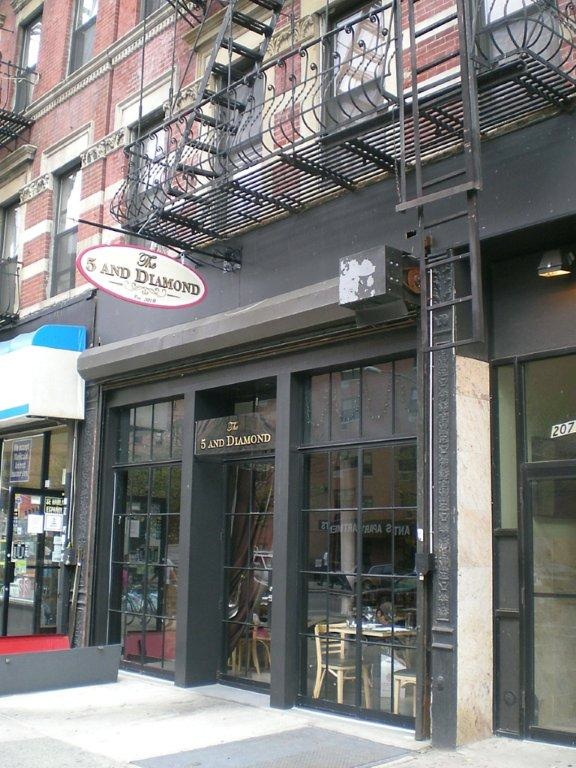 5 and Diamond
5 and Diamond
2072 Frederick Douglass Boulevard (near 113th Street)
646-684-4662
www.5anddiamondrestaurant.com
Photos by Sandy Margolis and Marcelo Montealegre and
Chris Davey
It was an absolutely gorgeous day,
75 degrees and sunny, as I drove north on the
Westside highway, headed for Harlem, after
picking up
my lovely girlfriend Katrina. Although we could’ve gotten off on 110th
Street to cut over, we decided to get off on 96th
so we could drive
along the Park, budding with spring flowers and smiling New Yorkers out for a stroll on this close to
perfect day.
Harlem’s restaurant scene is
growing vigorously and is the home to an array of fashionable new and
old
restaurants, each rightfully earning very high praise, including the
year-old
bistro Chez Lucienne, the soulful Sylvia’s, the longstanding Rao’s,
Marcus
Samuelsson’s new, always packed
Red Rooster, and now, the one-year and three month old 5 and Diamond
located on Fredrick
Douglas Boulevard, just two blocks north of the now lush green Central
Park. 5
and Diamond opens its doors nightly, literally, as large glass doors
stay
propped open while diners sit inside listening to Motown Soul
along
with the faint sound of Harlem’s bustling
streets in the background, it is entirely charming. There
are also a handful of small tables outside when the weather permits.
Inside, the walls are brick, the
tables are oak, set with beautiful glassware, and though the 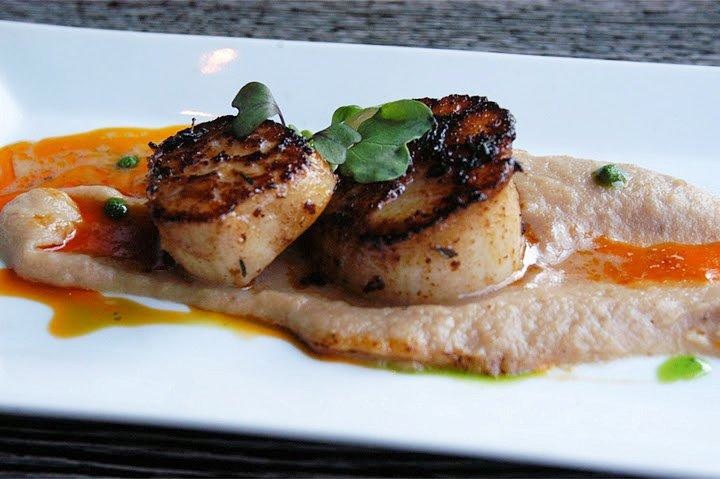 bar seats
no more than ten people, more than ten people were present. There
was a very eclectic crowd in the small dining room the night I dined,
fairly
typical according to owner Lia Sanfilippo. An older couple sat to my
right, in
the corner sat a table of five women in their 30’s chatting as if they
all had
in ear plugs, men and women in business suits stopping by for a quick
post-work
dinner and a handful of brawny men sat at the bar knocking back cold
brews
and
crispy appetizers. 5 and Diamond is clearly a neighborhood restaurant,
yet
according to Sanfilippo, New Yorkers from downtown come uptown for the
food and
experience. Duke
Ellington’s signature theme said, “Take the A Train, Soon you’ll be in
Sugar
Hill in Harlem”—but Sugar Hill is where the famous Cotton Club stood,
is a bit farther north of 5 and Diamond; instead you can take the B, C,
2 or 3 subway lines, to 110th Street and walk over two blocks to the
restaurant.
bar seats
no more than ten people, more than ten people were present. There
was a very eclectic crowd in the small dining room the night I dined,
fairly
typical according to owner Lia Sanfilippo. An older couple sat to my
right, in
the corner sat a table of five women in their 30’s chatting as if they
all had
in ear plugs, men and women in business suits stopping by for a quick
post-work
dinner and a handful of brawny men sat at the bar knocking back cold
brews
and
crispy appetizers. 5 and Diamond is clearly a neighborhood restaurant,
yet
according to Sanfilippo, New Yorkers from downtown come uptown for the
food and
experience. Duke
Ellington’s signature theme said, “Take the A Train, Soon you’ll be in
Sugar
Hill in Harlem”—but Sugar Hill is where the famous Cotton Club stood,
is a bit farther north of 5 and Diamond; instead you can take the B, C,
2 or 3 subway lines, to 110th Street and walk over two blocks to the
restaurant.
Sanfilippo and Selene Martinez are
the sole proprietors and have lived in Harlem for the last ten years.
Prior to
opening, many friends told them Harlem is not the place to open a
restaurant,
but they didn’t listen. Sanfilippo told me, “I know this neighborhood
well and
I know the people who live here. This is where I live and this is where
I wanted
to open a restaurant.” So she did.
Now, a little over a year later,
after a slightly slow winter, 5 and Diamond is picking up steam and
most of the
credit must go to executive chef David Martinez, formerly cooking at
Charlie
Palmer’s Aureole. The menu is small and to the point, seven appetizers
and ten
entrees. We started with a subtle chorizo soup, a rich mac’ and cheese
filled
with large chunks of luscious lobster tail, and an order of the savory
seared
scallops (above), two per
order, laid over a bed of delicate truffled
cauliflower
puree, sliced Gala apples and a crunchy frisee salad. The service was
bit off
during the beginning of our 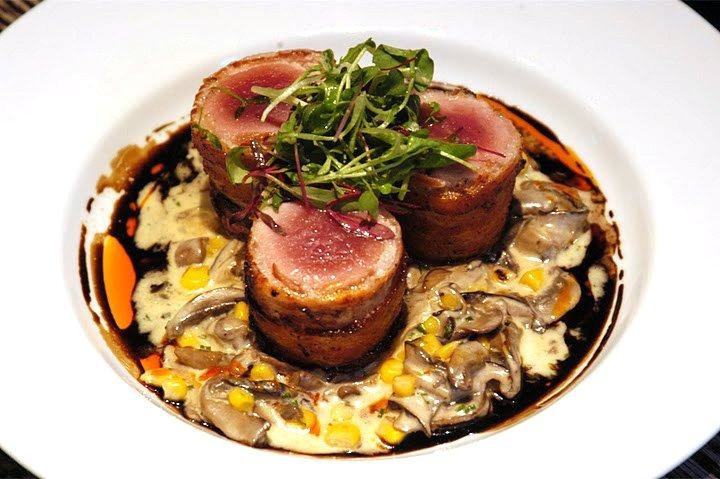 meal as our waiter seemed to
forget we were there,
but quickly redeemed himself before the main courses hit the table. My
girlfriend,
whose family comes from Jordan, ordered the braised lamb shank served
over sweet
corn, hen of woods mushrooms, and a creamy polenta, humbly stated that
the lamb
is the second best she’s ever had. (Her mother’s is obviously at the
top of
that list.) For my entrée, pork tenderloin (left) came wrapped in
apple-smoked bacon,
wild mushroom and sliced white grapes. Chef Martinez has a real knack
for
blending fine seasoning with rich ingredients and making sure each
mouthful has
a dynamic taste. He plays with the palate by using crunchy textures
while never
jeopardizing the overall root flavor of the dish. Desserts include a
warm
molten chocolate cake topped with fresh whip cream and a gooey pecan
pie surrounded
by a buttery crust.
meal as our waiter seemed to
forget we were there,
but quickly redeemed himself before the main courses hit the table. My
girlfriend,
whose family comes from Jordan, ordered the braised lamb shank served
over sweet
corn, hen of woods mushrooms, and a creamy polenta, humbly stated that
the lamb
is the second best she’s ever had. (Her mother’s is obviously at the
top of
that list.) For my entrée, pork tenderloin (left) came wrapped in
apple-smoked bacon,
wild mushroom and sliced white grapes. Chef Martinez has a real knack
for
blending fine seasoning with rich ingredients and making sure each
mouthful has
a dynamic taste. He plays with the palate by using crunchy textures
while never
jeopardizing the overall root flavor of the dish. Desserts include a
warm
molten chocolate cake topped with fresh whip cream and a gooey pecan
pie surrounded
by a buttery crust.
The wine list is growing quickly
and is comprised of very affordable wines. I foresee a very busy summer
at 5
and Diamond and couldn’t be happier to see a section of NYC that was
once
frowned on beginning to flourish.
NOTES FROM THE WINE CELLAR
Making
a
Case
for
Big
Bottles
by
John Mariani
Connoisseurs—very
rich
connoisseurs—will
pay
big
bucks
for a case, even a bottle of a rare
wine,
but the biggest trophies at wine auctions are the so-called large
format
bottles.
At last year’s
Auction Napa Valley, an eight magnum vertical of Colgin Cellars’ Cariad
bottling and dinner for six went for $250,000, then owner Ann Colgin
offered to
replicate the lot for four bidders to bid $250,000 each. This March in
Chicago,
Hart Davis Wine Company Auctions sold a single imperial of 1982
Lafite-Rothschild for nearly $42,000.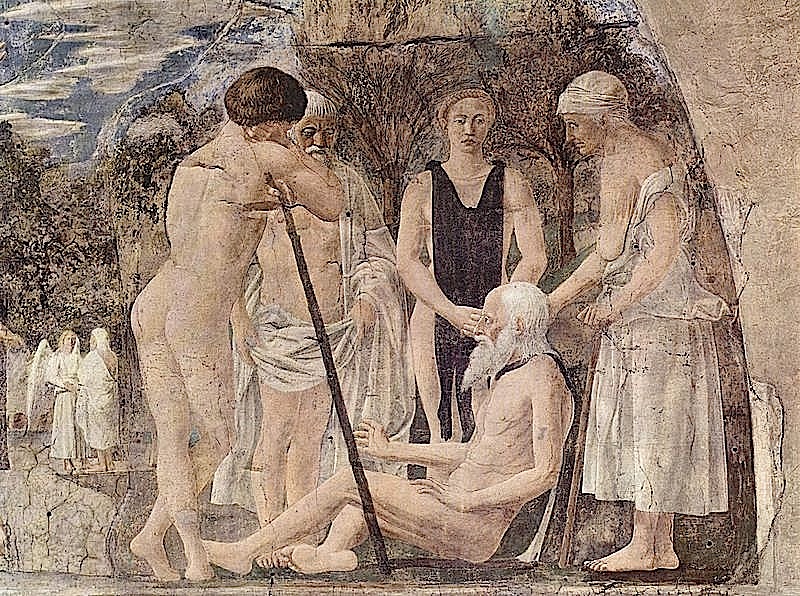
The
appeal
of
these
bottles--most
named
after long-lived Biblical figures, like
Methuselah, who lived 969 years (right)--is
clearly
their
impressive
size:
a magnum holds two
regular, 750 ml bottles; a jereboam, four; rehoboam, six; an imperial
or
Methuselah, eight; on up to a Nebuchadnezzar, 20, and beyond. An added
virtue
is that such bottles are said to age more slowly because of the ratio
of wine
to oxygen in the neck.
“People who
entertain a large group frequently favor big bottles out of
convenience,” said
Peter Meltzer, auction correspondent for Wine Spectator and author of
Keys to
the Cellar: Strategies and Secrets of Wine Collecting (Wiley)
in
a
phone
interview.
“In
the fine wine auction world, sales of large format bottles are
considered a
reflection of the economy. When
times are good, people won’t hesitate to uncork a big bottle, but
during a
recession they scale back on purchasing them. When
the
economy
improves,
they
can either drink up or
re-sell the bottles.”
This assertion
is backed up by Piero Selvaggio, owner of Valentino restaurant in Santa
Monica,
CA, where he cellars 75,000 bottles, with 250 in large formats. “When
the
economy was booming, I once sold a Nebuchadnezzar to a party,” he told
me, “but
the recession has blunted that kind of extravagance. These days some
customers
want to bring their own big bottles, and I charge a $50 corkage fee.”
For the most
part large formats are made by the most illustrious Bordeaux and
Burgundy
estates, which usually grab the highest auction prices. A few
California cult
wineries also make some big bottles, in most cases donated to charity
auctions.
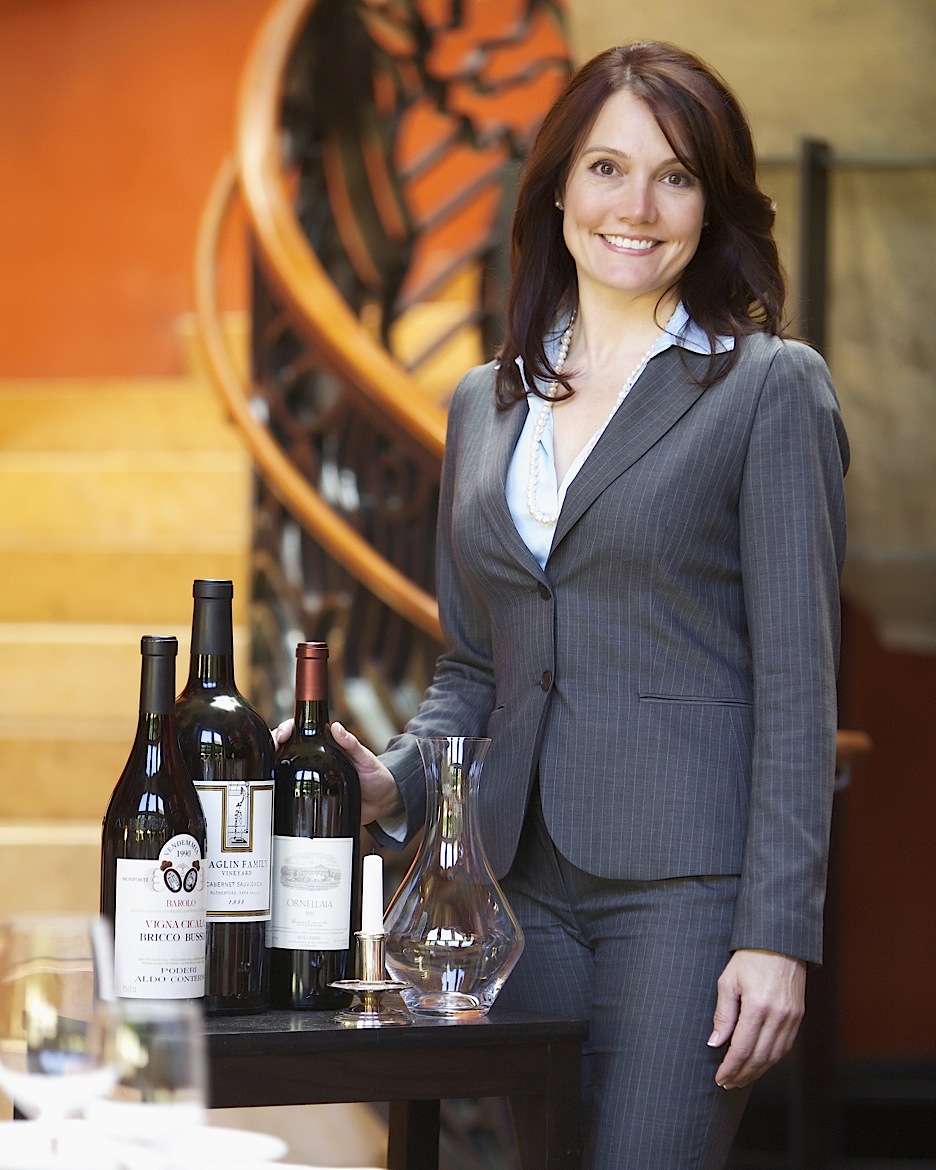 At restaurants
large bottles offer a more festive atmosphere at the table. “I tell my
customers that a magnum is an ideal size when dining with six to eight
people,”
says Linda Gérin, partner and wine director at Restaurant Jean-Louis
in
Greenwich, CT. “One bottle is not enough and as long as you’re having
two, uncorking
a magnum has a real glamor about it.”
At restaurants
large bottles offer a more festive atmosphere at the table. “I tell my
customers that a magnum is an ideal size when dining with six to eight
people,”
says Linda Gérin, partner and wine director at Restaurant Jean-Louis
in
Greenwich, CT. “One bottle is not enough and as long as you’re having
two, uncorking
a magnum has a real glamor about it.”
In fact, big
bottles can be the most sensible way to go for certain celebrations.
“Las Vegas
is the perfect city for large formats,” Jennifer Eby (left), wine manager at Bartolotta
Ristorante di Mare at Wynn Las Vegas told me. “We serve our food
family style, often to large tables, and I suggest a large format as
being
easier and more festive.” Asked about what wines comped high rollers
order, Eby
said, “The hotel wants to look after those guests and they drink
whatever they
want, but they really don’t take advantage by ordering big bottles. Our Asian guests almost never do and
tend to be very modest in their consumption of wine.”
The more
dedicated to stocking huge cellars a restaurant is, the more large
format bottles
it will carry. The cellar at
Charlie Trotter’s in Chicago holds more than 130 large formats,
including one
of only five imperials ever made of Penfold 1990 “Grange.” At Valbella in
Riverside, CT, wine director Nick Zherka offers a Methuselah of 1996
Richebourg
for $22,000 (right). When I asked if that
was negotiable, he said, “Well, maybe $21,000.”
For
the
individual
there
are
big
risks in buying big bottles as i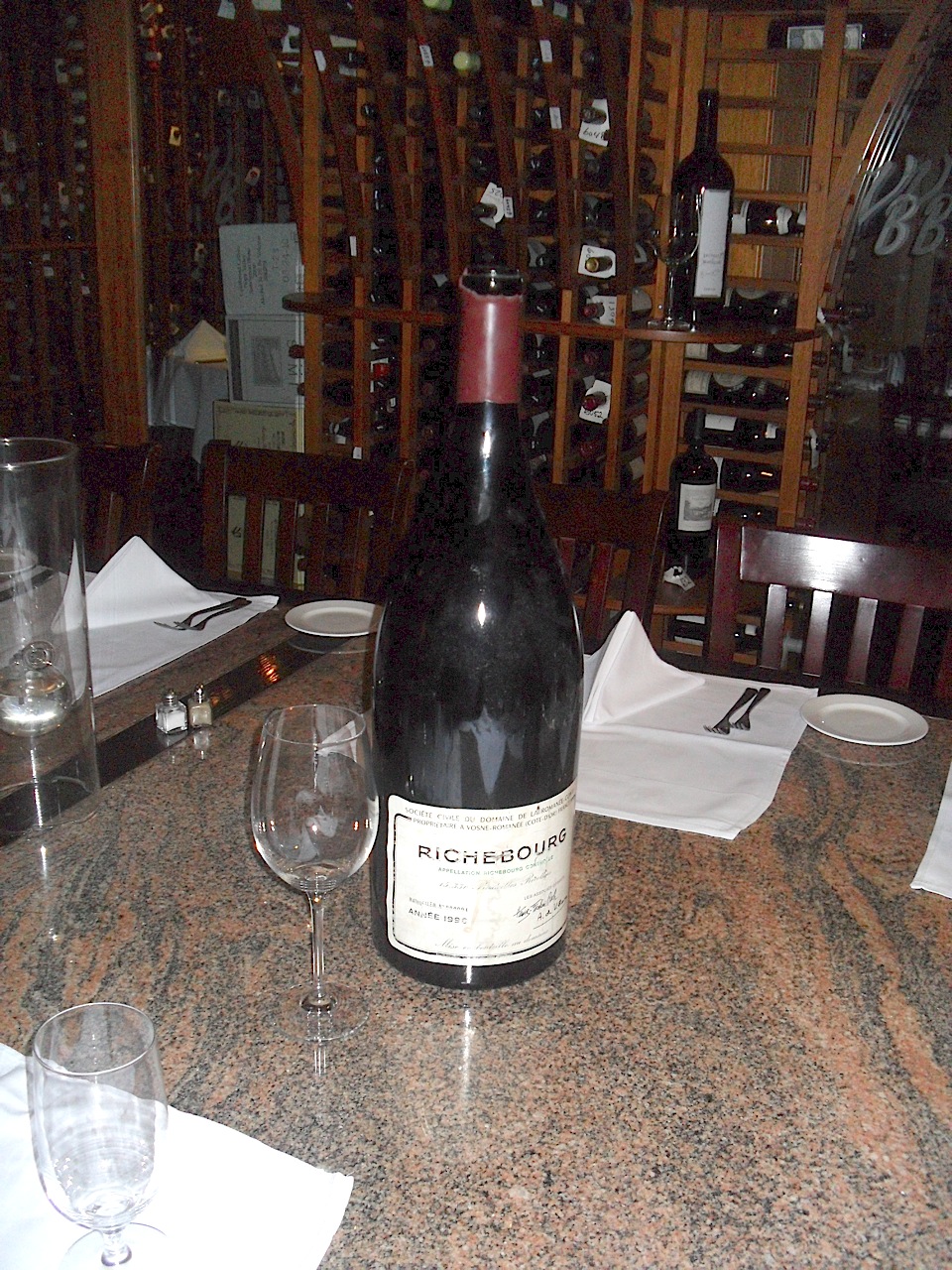 nvestments. Rarely
would the investor get a better price re-selling to a wine store or
restaurant—and
then only in a state where it is legal to re-sell wines.
Auction houses post estimate prices at
the going rate. Crucial for the
seller, says, Meltzer, is that “whatever you do, you must keep the
wines in a
professional, temperature controlled facility, so that an auction house
can
vouch for how it had been stored.”
nvestments. Rarely
would the investor get a better price re-selling to a wine store or
restaurant—and
then only in a state where it is legal to re-sell wines.
Auction houses post estimate prices at
the going rate. Crucial for the
seller, says, Meltzer, is that “whatever you do, you must keep the
wines in a
professional, temperature controlled facility, so that an auction house
can
vouch for how it had been stored.”
There’s
no
real
way,
shy
of
opening and tasting them, to know if the wines will be
sound in years to come, or if in vertical vintages, any one of them may
have
gone bad. Which is why so many
large format bottles are just sold and re-sold and never drunk at all. In which case, you are selling an
artifact, not a work of art.
It
makes
more
sense
to
buy
a big bottle at a retail store for a special
occasion,
as I did when my sons were born, in 1980 and 1985 respectively. I put the bottles away for their
twenty-first birthdays, when the magnums made quite splash. Rarely had
I
enjoyed a wine more and it was money very well spent.
John Mariani's wine column appears in Bloomberg Muse News, from which this story was adapted. Bloomberg News covers Culture from art, books, and theater to wine, travel, and food on a daily basis.
❖❖❖
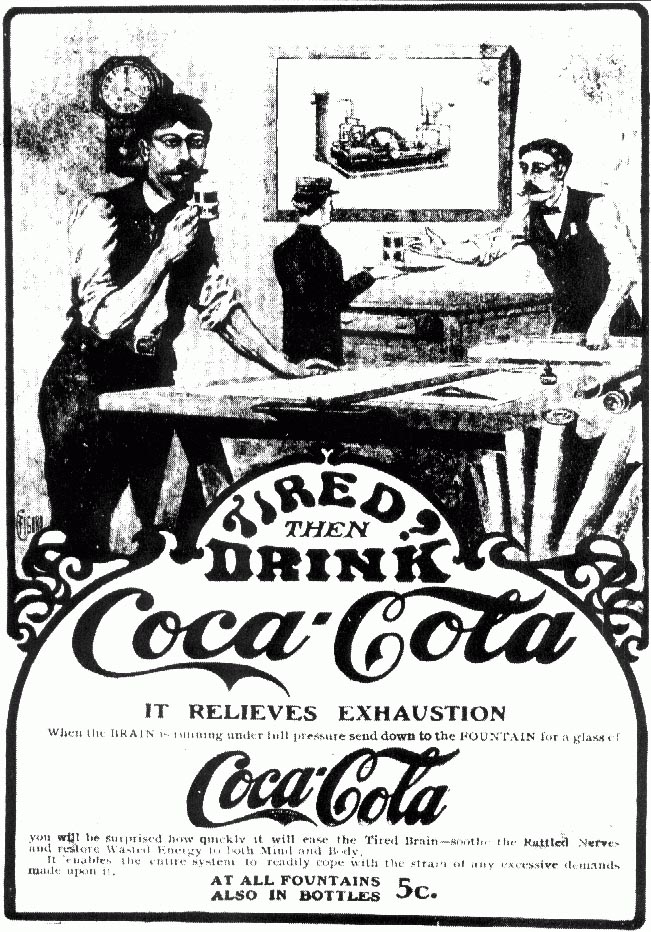
MAYBE HE SHOULD ALSO SELL
A LINE OF MUNCHIES?
Commercial
artist and entrepreneur Clay Butler has created Canna Col,
which contains THC, the psycoactive ingredient in marijuana,
which he
sells for $10 to $15 for a 12-ounce
bottle. He is also making
Dr Pepper-like Doc Weed, lemon-lime Sour Diesel, and Orange Kush.
OTHER THAN THAT IT'S FOOLPROOF!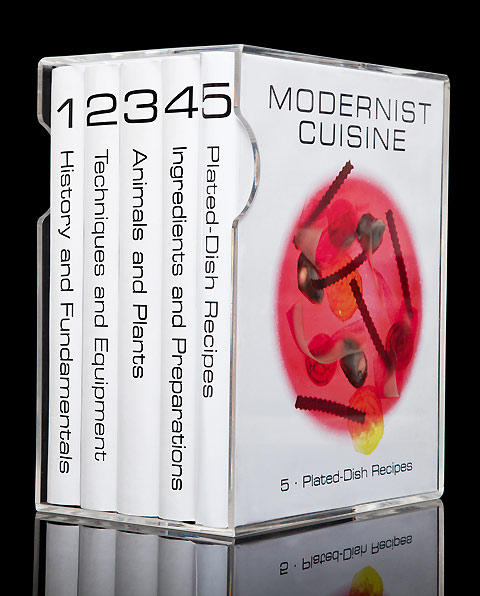
"On pages 5·133 and 6·38, the recipe for Toasted Oat Jus should call for 200 g of pigeon wings with a scaling of 80%, 300 g of sweet onions with a scaling of 300%, 45 g of grape seed oil with a scaling of 120%, 10 g of garlic with a scaling of 19.2%, 750 g of brown pigeon stock with a scaling of 300%, 300 g of red wine with a scaling of 120%, 650 g of rendered foie gras fat with a scaling of 26%, 50 g of cognac with a scaling of 20%, 30 g of steel-cut oats with a scaling of 12%, 20 g of sherry vinegar with a scaling of 8%, 13 g of sugar with a scaling of 5.2%, and 2 g of black peppercorns with a scaling of 0.8%."—One of the 368-plus corrections just issued for the six-volume tome, Modernist Cuisine.
❖❖❖
If you would like to be featured in our Quick Bytes section, please visit our ADVERTISEMENT page at www.JohnMarianiMedia.com
Paid Advertisement
|
Comme
Ca
On May 18, Chef David Myers’
Comme Ca in West Hollywood, CA,
is
hosting
dinner
to
benefit relief efforts in the Japanese prefecture of Ibaraki.
Guest chefs Michael Voltaggio, Roy Choi, Jordan Kahn, Jon Shook &
Vinny Dotolo will join Myers to cook a multi-course tasting menu.
$110pp. Call 323-782-1104 or visit www.commecarestaurant.com. |
Tattered Cover
on Colfax
On May 31 at Tattered Cover on
Colfax in Denver, CO,
Melissa Coleman
will read from This Life Is in Your Hands: One Dream, Sixty Acres, and
a Family Undone, a memoir that takes place during the early days of the
natural living and organic food movements. Tattered Cover 303-322-7727,
or visit www.melissacoleman.com
|
|
TWENTY6 Restaurant
On May 19 in Palm Springs, CA,
La Quinta Resort & Club¹s TWENTY6 restaurant will host a
4-course
California Craft Beer dinner with Lost Coast Brewery based in Humboldt
County which makes some of the best microbrews in the country. Price is
$30pp. Call 760-564-5720 or visit www.laquintaresort.com |
Tibetan Aid Project
On June 1 at the Arader
Gallery in New York, NY
the Tibetan Aid Project will host the benefit gala Taste & Tribute
in efforts to support the cultural and spiritual heritage of
Tibet.
Guests will enjoy an exquisite four-course meal prepared by a superbly
talented team of New York chefs including Missy Robbins, George Mendes,
Gavin Kaysen, and Michael Laiskonis. There will also be a live
auction
which will feature Tibetan artwork and luxurious getaways. $475 pp.
Visit www.TibetanAidProject.org
|
|
World
Culinary
Showcase
From May 21 through May 24, the World Culinary Showcase
will take place at the National Restaurant Association Restaurant,
Hotel-Motel Show, in Chicago, IL,
where
top
culinary
masters and celebrity chefs will perform live on
stage. $90, $149pp. Call 312-853-2525 or visit www.show.restaurant.org
. |
Powell's Books
on Hawthorne
On June 6 at Powell's Books on
Hawthorne in Portland, OR,
Melissa
Coleman will read from This Life Is in Your Hands: One Dream, Sixty
Acres, and a Family Undone, a memoir that takes place during the early
days of the natural living and organic food movements. Powell's
503-228-4651, or visit www.melissacoleman.com
|
Any of John Mariani's books below
may be ordered from amazon.com.
" A fact-filled,
entertaining history [that] substantiates its title with hundreds of
facts in this meaty history of the rise of Italian food culture around
the
globe. From Charles Dickens's journey through Italy in 1844 to
20th-century
immigrants to America selling ice cream on the streets of New Orleans,
Mariani
constantly surprises the reader with little-known culinary anecdotes
about
Italy and its people, who have made pasta and pizza household dishes in
the
U.S. and beyond."--Publishers Weekly "Equal
parts
history,
sociology,
gastornomy,
and
just
plain
fun,
How
Italian
Food
Conquered
the
World
tells
the
captivating
and
delicious
story
of
the
(let's
face
it)
everybody's
favorite
cuisine with clarity, verve
and more than one surprise."--Colman Andrews, editorial director of The Daily Meal.com. "A
fantastic and fascinating read, covering everything from the influence
of Venice's spice trade to the imnpact of Italian immigrants in
America and the evolution of alta cucina. This book will serve as a
terrific resource to anyone iunterested in the real story of Italian
food."--Mary Ann Espositio, hosty of PBS-TV's Ciao Italia. "John
Mariani
has
written
the
definitive
history
of
how
Italians
won
their
way
into
our
hearts,
min
ds,
and
stomachs.
It's
a
story
of
pleasure
over
pomp
and
taste over technique."--Danny Meyer, owner of
NYC restaurants Union Square Cafe, Gotham Bar & Grill, The Modern,
and Maialino.
|
 |
 |
 |
 |
 |
 |
 |
 |
 Everett
Potter's
Travel
Report:
Everett
Potter's
Travel
Report: 
 Eating
Las
Vegas is the new on-line site for Virtual Gourmet
contributor John
A. Curtas., who since 1995 has been commenting on the Las Vegas food
scene and reviewing restaurants for Nevada Public Radio. He is
also
the restaurant critic for KLAS TV, Channel 8 in Las Vegas, and his past
reviews can be accessed at KNPR.org.
Click
on
the
logo
below
to
go
directly
to
his
site.
Eating
Las
Vegas is the new on-line site for Virtual Gourmet
contributor John
A. Curtas., who since 1995 has been commenting on the Las Vegas food
scene and reviewing restaurants for Nevada Public Radio. He is
also
the restaurant critic for KLAS TV, Channel 8 in Las Vegas, and his past
reviews can be accessed at KNPR.org.
Click
on
the
logo
below
to
go
directly
to
his
site.

Tennis Resorts Online: A Critical Guide to the World's Best Tennis Resorts and Tennis Camps, published by ROGER COX, who has spent more than two decades writing about tennis travel, including a 17-year stretch for Tennis magazine. He has also written for Arthur Frommer's Budget Travel, New York Magazine, Travel & Leisure, Esquire, Money, USTA Magazine, Men's Journal, and The Robb Report. He has authored two books-The World's Best Tennis Vacations (Stephen Greene Press/Viking Penguin, 1990) and The Best Places to Stay in the Rockies (Houghton Mifflin, 1992 & 1994), and the Melbourne (Australia) chapter to the Wall Street Journal Business Guide to Cities of the Pacific Rim (Fodor's Travel Guides, 1991).


The Family Travel Forum
- A community for those who
"Have Kids, Still Travel" and want to make family vacations more fun,
less work and better value. FTF's travel and parenting features,
including
reviews of tropical and ski resorts, reunion destinations, attractions,
holiday
weekends, family festivals, cruises, and all kinds of vacation ideas
should be
the first port of call for family vacation planners. http://www.familytravelforum.com/index.html
ALL YOU NEED BEFORE YOU GO


MARIANI'S VIRTUAL GOURMET NEWSLETTER is published weekly. Editor/Publisher: John Mariani.
Contributing Writers: Christopher
Mariani, Robert Mariani,
John A. Curtas, Edward Brivio, Mort
Hochstein, Suzanne Wright, and
Brian Freedman. Contributing
Photographers: Galina Stepanoff-Dargery, Bobby Pirillo. Technical
Advisor:
Gerry McLoughlin.
© copyright John Mariani 2011

